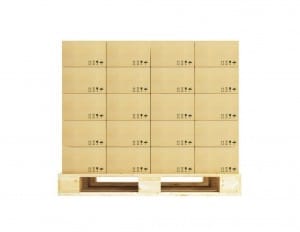 Too many compelling package designs fail simply because they aren’t practical. During the design phase it is essential that you realize that you don’t have the world of all possibilities in which to design your package. Find out what the distribution system demands before you even begin the design of your package or label. Check with handlers, warehouse people, forklift drivers, truck drivers and others that will be handling your branded products. And learn the laws and regulations that dictate certain design elements.
Too many compelling package designs fail simply because they aren’t practical. During the design phase it is essential that you realize that you don’t have the world of all possibilities in which to design your package. Find out what the distribution system demands before you even begin the design of your package or label. Check with handlers, warehouse people, forklift drivers, truck drivers and others that will be handling your branded products. And learn the laws and regulations that dictate certain design elements.
Failing to do the research prior to your package design could easily result in your package and product being crushed , left on the dock, deemed unreadable, mis-delivered, or being out of compliance.
Product: The individually packaged units of your product must conform to the retail shelving realities of the marketplace. For instance, your package can’t be taller than the shelf height will allow. The marketplace tends to favor a rectangular package that can make full side contact with the package next to it to maximize the use of the limited shelf space. Also, your label should be visible from at least 4 feet away because that’s how far away your customers generally are from your package. It must be simple, compelling, and non-confounding. It must clearly say what it is with as many quality ques as you can muster, or it will be instantly overlooked!
Carton: The carton that contains your products has to be lifted by a human, and that limits it to 30-40 pounds. Figure out how many of your branded product units can fit in a carton that is less than 40 pounds. The cartons must be strong enough so that they can be stacked on top of each other – without collapsing! Remember, the bottom carton has to support all the other cartons above it in a stack or on a pallet. Also the logo and the labeling for the carton has to not only comply with legal and industry requirements, but it must be easily read by the fork lift operators in the warehouses through which it will travel on its way to the eventual customer.
Pallet: When you see the big 18 wheelers on interstate you may not realize that they generally have 22 pallets inside, consisting of 2 rows of 11 4’ x 4’ pallets stacked as high with goods as the weight limits allow. Many countries limit the size of shipping containers to 20 feet, but in the US the most efficient and economical way to ship is in full 40- and 44-foot container loads. In addition to trucks, these container loads may be transported by train, boat or ship. You may have to consolidate shipping with others to fill the container unless you are fortunate enough to have buyers who purchase in full containers. So much of commerce, including discounting and quantity deals, is based on how many items fit on a pallet and how many pallets fit in a shipping container. Be sure to maximize your products in the smallest space to take advantage of this reality.
There are many more physical parameters that affect your package and label designs. Understand all the rules and boundary lines before you start getting “creative.” Once you understand the restrictions you must adhere to, then you have the luxury of completing the design of your package. You still have plenty of opportunities to make your package compelling as long as it is practical first!


